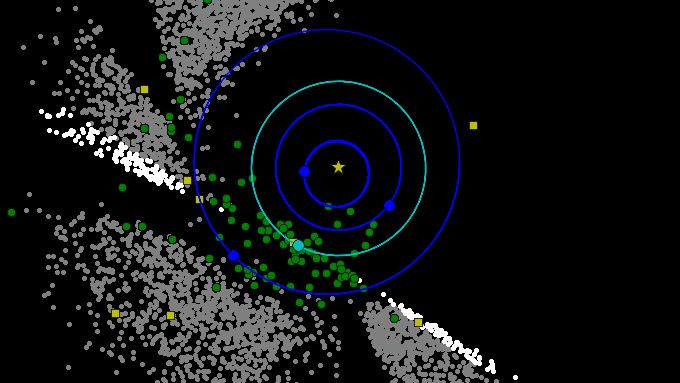NASA’s Asteroid Hunting Spacecraft Discovers 72 Near-Earth Objects, Including 8 Potentially Hazardous Ones

On Tuesday, NASA’s Near-Earth Object Wide-field Survey Explorer (Neowise) mission — launched in 2009 — released a fresh batch of data. Since December 2013, the Neowise spacecraft has successfully classified 439 near-Earth object (NEOs) — a term used to describe comets and asteroids that, at some point in the orbits around the sun, come relatively close to Earth — some of which had been previously discovered.
“By studying the distribution of lighter- and darker-colored material, Neowise data give us a better understanding of the origins of the NEOs, originating from either different parts of the main asteroid belt between Mars and Jupiter or the icier comet populations,” James Bauer, the mission’s deputy principal investigator at NASA's Jet Propulsion Laboratory in Pasadena, California, said in a statement.
An asteroid is classified as an NEO when its distance from the Sun during its nearest approach is less than 1.3 times the average Earth-Sun distance.
The Neowise spacecraft, originally known as Wide-field Infrared Survey Explorer (Wise) was launched by NASA in December 2009, but was placed in hibernation in February 2011 once its primary mission of creating infrared maps of the Earth sky was completed. It was reactivated in September 2013, rechristened as Neowise and given a new mission — to identify and characterize the population of potentially hazardous near-Earth objects.
Since December 2013, the spacecraft has discovered 250 new asteroids and comets, including 72 near-Earth objects. Eight of the objects discovered in the past year have been classified as potentially hazardous asteroids (PHAs) — referring to objects whose orbits, at some point, are separated from Earth’s by a distance of 0.05 Astronomical Units (approximately 4.65 million miles) or less.
Neowise has also studied over 19,000 asteroids and comets at infrared wavelengths.
“Neowise discovers large, dark, near-Earth objects, complementing our network of ground-based telescopes operating at visible-light wavelengths. On average, these objects are many hundreds of meters across,” Neowise principal investigator Amy Mainzer said in the statement.
© Copyright IBTimes 2024. All rights reserved.






















